All products featured are independently chosen by us. However, SoundGuys may receive a commission on orders placed through its retail links. See our ethics statement.
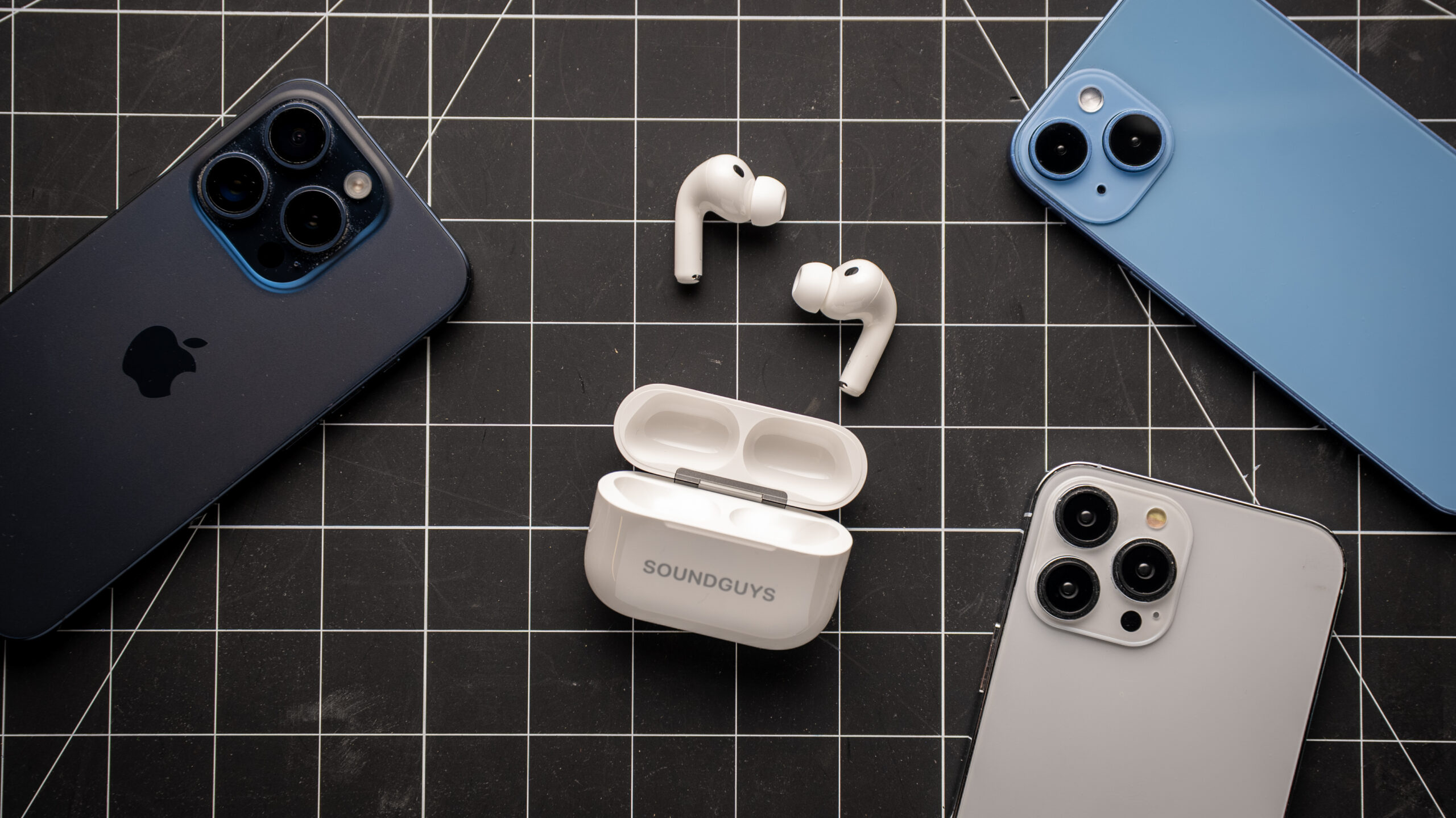

Apple AirPods Pro 3 review: Close to perfect
November 7, 2025


Apple AirPods Pro 3
Weight: 5.6g
The Apple AirPods Pro 3 aren’t your average noise-canceling earbuds. They are also a pair of hearing aids, a fitness tracker, and a real-time language translator. But with so many features packed into such a small, white plastic package, has Apple bitten off more than it can chew? Do the AirPods Pro 3 sound any good, or is Apple just banking on marketing fluff to stay afloat? We’ve spent some quality time with the AirPods Pro 3 and learned everything you need to know about Apple’s latest earbuds.
To get the most out of the AirPods Pro 3, you’ll need to own an Apple device, such as an iPhone. These earbuds are also a good choice for people who want to take advantage of features such as heart rate tracking and Live Translation.
The AirPods Pro 3 are also a great choice for people with mild to moderate hearing loss since the earbuds can also act as clinical-grade hearing aids.
- This article was updated on November 7, 2025, to add in more content from our labs about the sound quality.
- This article was updated on October 3, 2025, to include microphone samples of the AirPods Pro 3 with Voice Isolation enabled.
- This article was published on September 24, 2025.
What’s it like to use the Apple AirPods Pro 3?
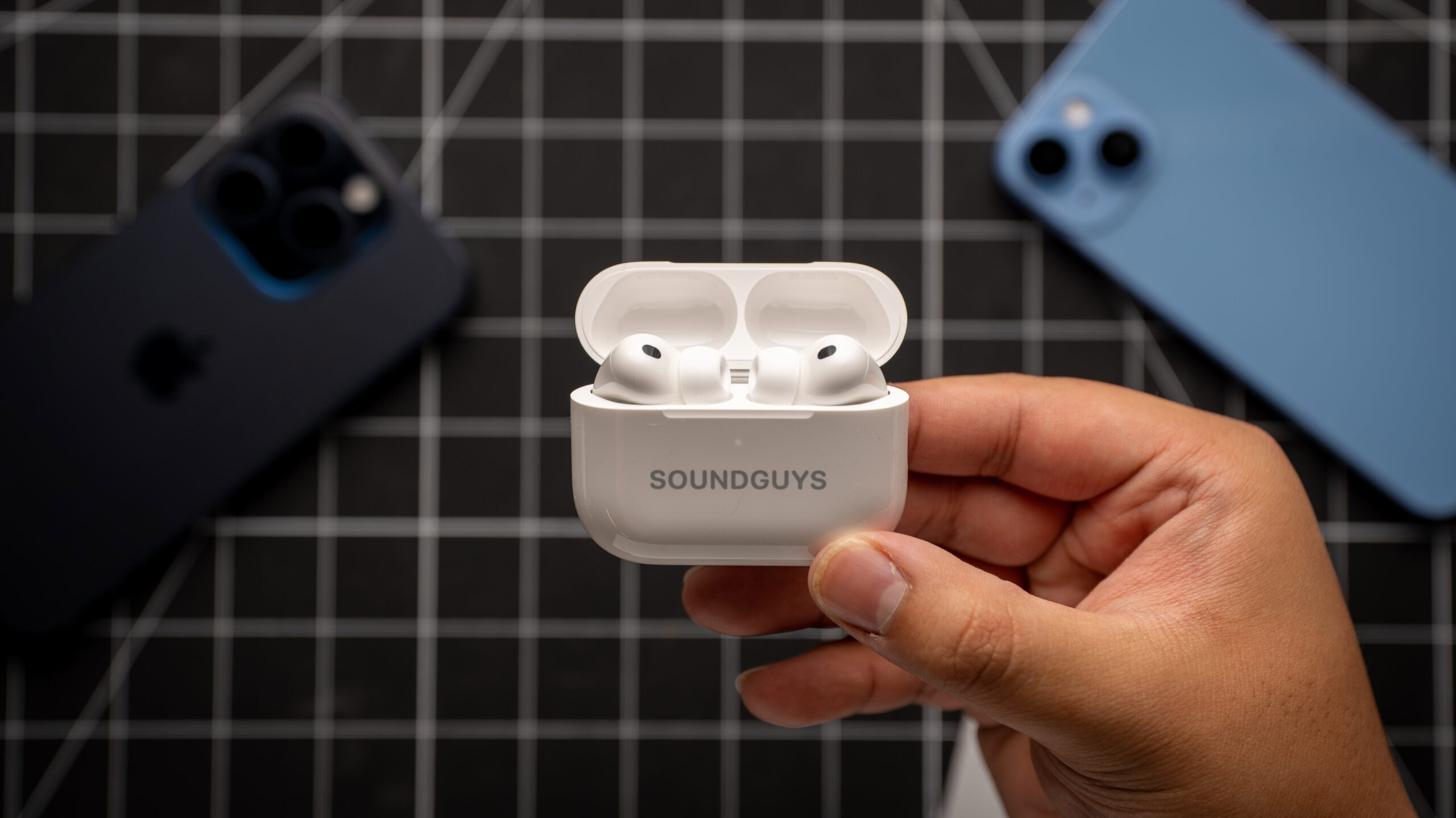
The AirPods Pro 3 look identical to its predecessor, though with some welcome refinements that improve fit and stability. For example, the smaller bulb means that the earbuds are less likely to pop out of your ears. This design tweak also means that people with smaller ears should have an easier time wearing the AirPods Pro 3 compared to the last generation. The bulb on the AirPods Pro 3 stretches further away from the stem compared to its predecessor. This allows the earbud to sit deeper in your ear canal, providing a better seal for more consistent sound quality and ANC performance.
Additionally, Apple has also introduced a new set of foam-infused ear tips with the AirPods Pro 3. The foam interior allows the tips to easily conform to the shape of your ear canal, ensuring a secure fit. Meanwhile, the silicone exterior protects the delicate foam from degradation due to oil and sweat. I was very excited to try out these new ear tips, especially since I can’t get the AirPods Pro 2 to stay in my ears using the stock silicone ear tips. Instead, I have to use third-party foam ear tips to use the AirPods Pro 2 comfortably. That being said, the AirPods Pro 3’s new ear tip design should solve my fit issues. However, after trying these foam-infused ear tips, I realized that these aren’t the miracle solution I was hoping for.

The new ear tips allow the AirPods Pro 3 to stay in my ears more securely than its predecessor, especially while walking down the street. However, the earbuds’ glossy exterior and the smooth silicone exterior of the ear tips cause the AirPods Pro 3 to push out of my ears — especially as sweat and oil start to build up on my skin. Granted, everyone has different skin types and ear anatomy, so you may have better luck with Apple’s new ear tips than I did.
In theory, the foam and silicone hybrid ear tips sound like a good idea. However, in practice, I don’t think they hold a candle to normal foam ear tips — especially when it comes to getting a secure fit. Instead, I wish Apple would just make a normal pair of foam ear tips and stick them in the box. Sometimes you don’t have to reinvent the wheel; just include a good set of tires and call it a day.
The charging case’s design remains relatively unchanged, featuring the same glossy, scratch-prone plastic build as its predecessor. Underneath, you’ll find a USB-C port for charging and speakers that can play a sound when you need to find your charging case. There’s also a metal anchor on the right if you want to attach a lanyard to your charging case. Apple has also replaced the pairing button with a capacitive touch sensor on the front of the case, underneath the lip — similar to the charging case of the AirPods 4 and AirPods 4 with Active Noise Cancellation. It works well enough for pairing and resetting the AirPods, though I sometimes find myself unsure if my taps have registered.
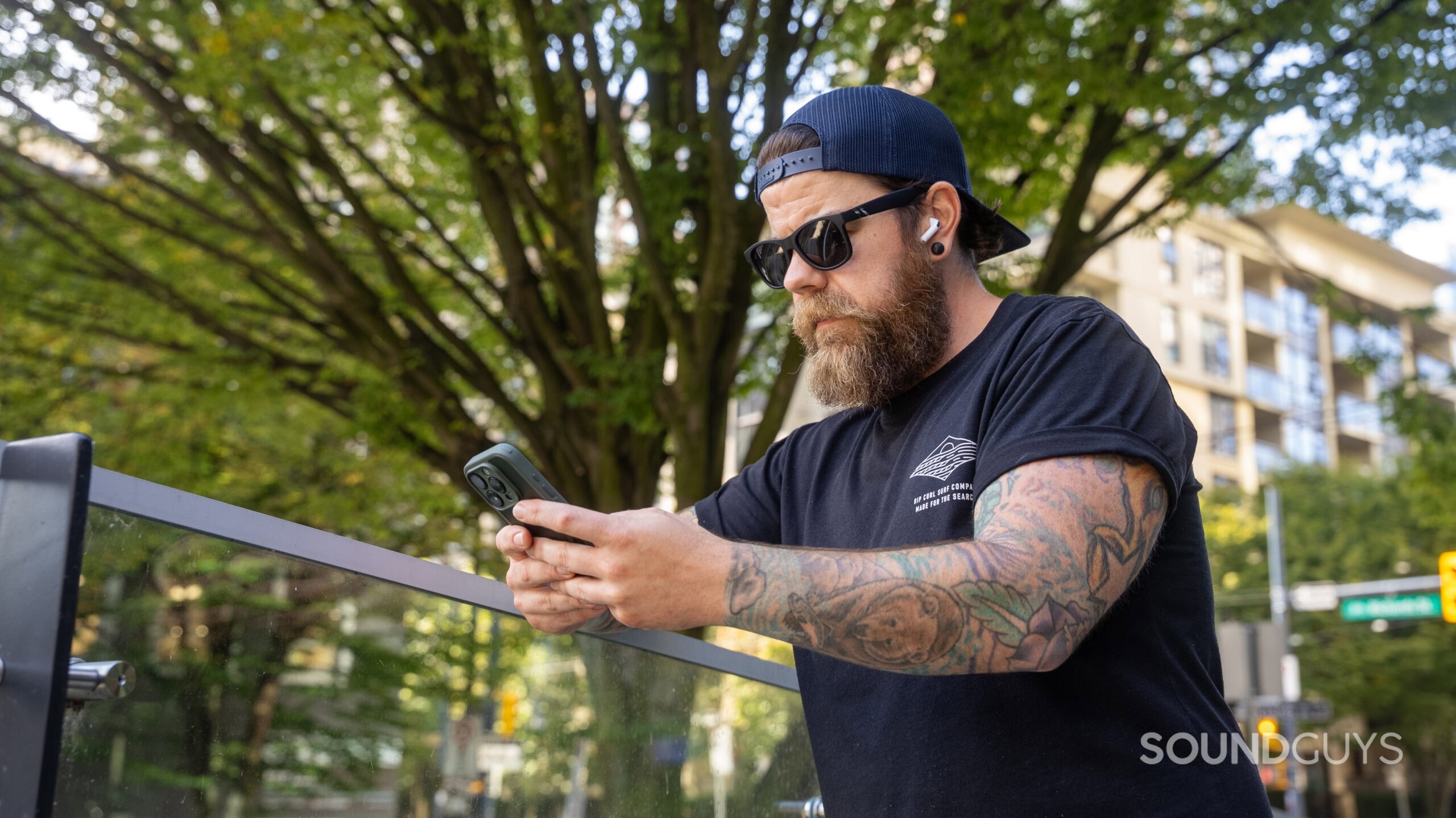
Using any pair of AirPods with an Apple device is usually a straightforward affair, though I did experience some connection issues with the AirPods Pro 3. For example, there were moments when the AirPods Pro 3 didn’t automatically connect to my phone or laptop. This meant that I had to manually select the device from my Bluetooth list.
Also, occasionally and out of nowhere, the earbuds would pan the audio towards the right channel. I was able to fix this by placing the earbuds back in the charging case for a few seconds. This happened to me a handful of times, but fortunately, the problem hasn’t resurfaced in the last three days. I’m hoping this is just a case of launch-day bugs and not a sign of long-term issues to come.
The AirPods Pro 3 can be controlled by swiping and squeezing on the stem of either earbud.
| Action | Operation |
|---|---|
Single squeeze | Play/pause |
Double squeeze | Next track |
Triple queeze | Previous track |
Squeeze and hold (one earbud) | Listening mode toggle |
Squeeze and hold (both earbuds) | Live Translation |
Swipe up/down | Volume up/down |
What are the best features of the Apple AirPods Pro 3?
The AirPods Pro 3 aren’t designed solely for music listening. Instead, Apple has set out to turn its flagship earbuds into an all-in-one fitness tracker, hearing aid, and real-time language translator.
Heart rate monitoring

Apple has embedded a new heart rate sensor into the AirPods Pro 3. This lets you track your workouts without the need for a separate fitness tracker. I found that the earbuds did a good job in tracking my heart rate during a brisk walk or light jog. The results even seemed to match the heart rate metrics of my Apple Watch. However, I ran into problems while performing more vigorous exercises. Because the AirPods Pro 3 don’t use fins or hooks to ensure a secure fit, the earbuds tend to slip out of my ear during intense strength training and long-distance runs. As the earbuds slip out, the heart rate sensor loses contact with my skin, which can result in heart rate data.
If you can get a good fit with the AirPods Pro 3, then it’s likely that you’ll be able to get good workout data with its built-in heart rate sensor. However, if you’re like me and have issues getting the AirPods Pro 3 to stay in place, then you’re better off tracking your workouts with a smartwatch or chest strap. Alternatively, you can consider other workout earbuds with heart-rate sensors that use a hook or fin for a more secure fit, such as the Beats Powerbeats Pro 2 or Sennheiser MOMENTUM Sport.
Hearing Aid features
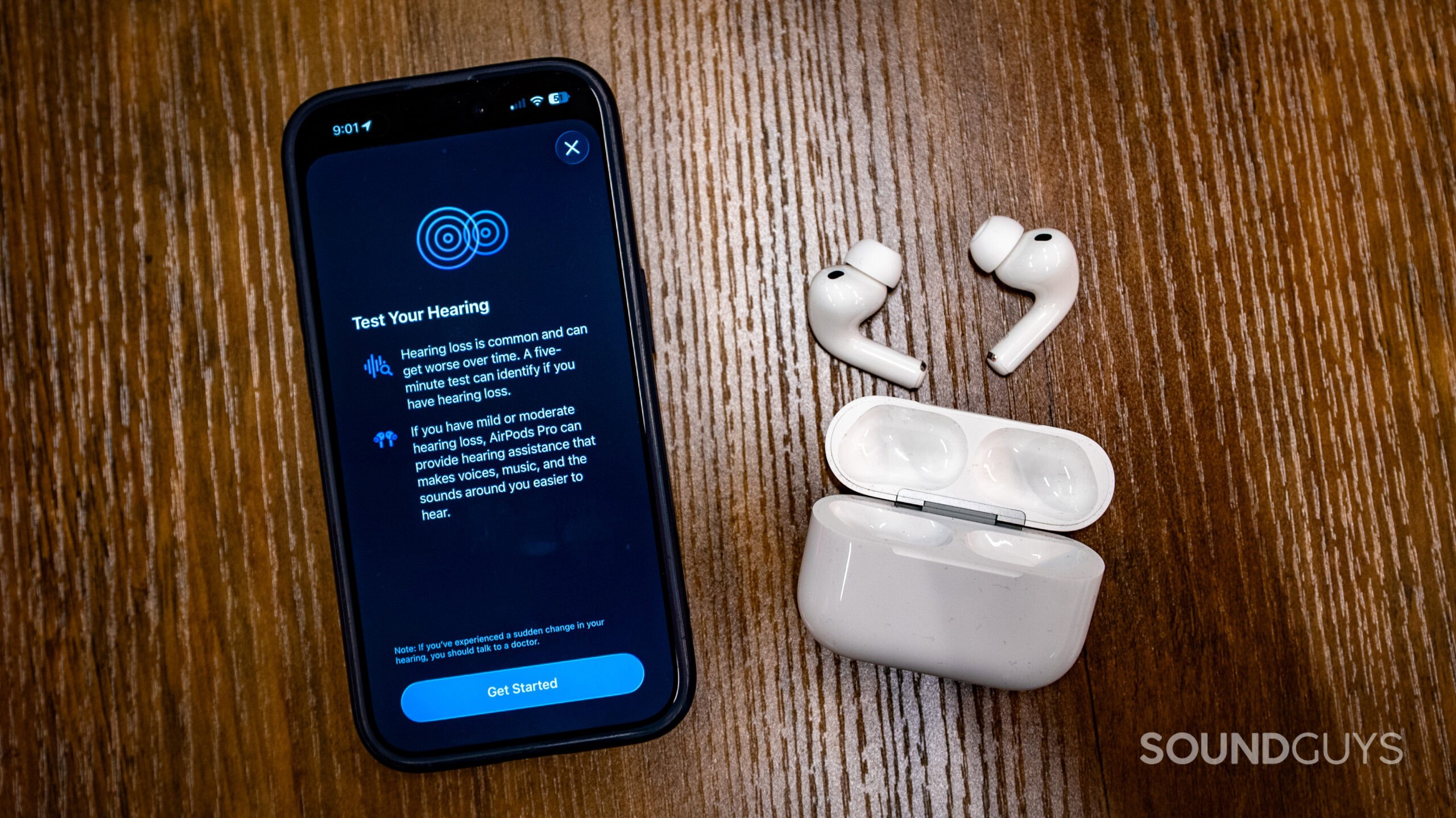
The AirPods Pro 3 offer the same Hearing Aid features found on the AirPods Pro 2. To use the feature, you’ll need to take Apple’s Hearing Test on a compatible iPhone or iPad. Once completed, your AirPods will be tuned based on the results of your hearing test. You can also adjust parameters such as the level of amplification, channel balance, tone, and ambient noise reduction. In addition to the Hearing Assistance features, the AirPods Pro 3 can also offer Hearing Protection — essentially turning the earbuds into a pair of earplugs. This is particularly useful if you’re at a loud concert and don’t have a dedicated pair of earplugs on hand.
We’re currently in the process of evaluating the AirPods Pro 3’s hearing aid performance. In the meantime, you can check out my experience using the Hearing Aid features on the AirPods Pro 2, which should give you a glimpse of what to expect using the Hearing Aid feature on the AirPods Pro 3.
Live Translation

Live Translation is perhaps the most ambitious addition to the AirPods Pro 3. These earbuds aren’t the first to offer real-time translation, but Apple is making some bold claims, saying that Live Translation should provide a “magical experience”. However, the truth is that the feature still has a long way to go.
I tested the Live Translation by talking to one of my French-speaking co-workers at the SoundGuys office. With the translation on, the AirPods switch to Transparency mode so that I can hear the person in front of me speak. As they started speaking, the AirPods switched to a light noise-canceling mode to allow me to hear the English translation clearly. After hearing the translation, the earbuds switch back to Transparency Mode so that I can hear myself clearly as I reply. The AirPods do a great job in transitioning between the different listening modes. Voices sound clear, and the transitions between Transparency Mode and ANC didn’t feel jarring.
Unfortunately, using Live Translation isn’t as seamless as Apple makes it out to be. There is a noticeable delay that creates awkward silences as I wait to hear the translated speech. Also, the AirPods often picked up the chatter of my other co-workers in the office, which messed up the translations that were being fed into my ear.
As of now, I wouldn’t be confident trying to use this feature abroad. The translations simply don’t come through fast enough for me to feel comfortable carrying on a conversation. I’m also not confident in Live Translation’s ability to isolate voices — especially in crowded areas where there’s a lot of chatter going on. Live Translation is also missing some widely spoken languages, such as Mandarin and Hindi. The current language selection is mostly European languages, which is ironic since Live Translation isn’t available for EU residents. In fairness, Live Translation is still in beta, so we’ll likely see performance improvements and additional language support in the future.
As of September 2025, Apple Live Translation currently supports the following languages:
- English (UK)
- English (US)
- French
- German
- Portuguese (Brazil)
- Spanish (Spain)
Other notable features
Apple device owners get access to the AirPods’ full suite of features, including automatic device switching, personalized spatial audio with head tracking, and Audio Sharing with compatible Beats and Apple headphones. You can access the earbuds’ settings in the Settings app on any compatible Apple device. From this page, you can toggle between listening modes, access Hearing Health features, toggle Head Gestures, and customize controls. You can also enable Personalized Volume, which adjusts the volume of your media based on your surroundings, and Conversation Awareness, which lowers media volume and reduces background noise when you start talking to people.
Missing features
Despite being Apple’s supposed “latest and greatest” AirPods, we still do not have two key features: better Android support and an equalizer. All the features listed in this review are only available to Apple devices. If you try to pair to an Android phone, all you’ll be able to do is play music. You can’t even update the firmware without being paired to a supported Apple device. Also, Apple has yet to include any way to equalize the earbuds to your liking; a grave oversight in an age where even some of the cheapest earbuds come with an in-app EQ.
How does the Apple AirPods Pro 3 connect?

Despite being Apple’s latest flagship earbuds, the AirPods Pro 3 still use the older Bluetooth 5.3 stack with support for SBC and AAC codecs. The AirPods Pro 3 do not support any high-quality codecs such as aptX or LDAC. You can enjoy high-quality, low-latency audio using the AAC codec when paired with an iOS device. On Android, you can pair with the AirPods Pro 3, though with limited functionality. You won’t be able to customize the earbuds, use any features like Spatial Audio or Hearing Aid, or even update the firmware.
All connections and audio processing are handled by the H2 chip embedded in the earbuds; the same chip we saw in the older AirPods Pro 2. Apple has also included its newer U2 chip in the charging case, which lets you precisely locate your case when you misplace it.
No. The AirPods Pro 3 do not currently support streaming Lossless audio wirelessly.
To pair the AirPods Pro 3 to an iPhone, follow these steps.
- Place your AirPods Pro 3 next to your iPhone and open the lid.
- A prompt should appear on your iPhone asking if you’d like to connect to the earbuds.
- Press “Connect” and follow the prompts to complete pairing.
Once paired to your iPhone, the second-gen AirPods Pro will automatically be recognized on any source device associated with your iCloud account. This association also enables automatic device switching between Apple devices.
You can also try pairing manually if you don’t see a prompt. To do this, follow these steps.
- Unlock your Android phone and open the Settings app.
- Select the Bluetooth menu and turn the toggle on.
- Open the AirPods Pro 3 case near your Android phone.
- Tap twice on the green light on the case. The light should now be blinking white, indicating that the AirPods are now in pairing mode.
- Select “AirPods Pro 3” from your phone’s Bluetooth device list.
Once connected, you’ll be able to listen to music with your AirPods Pro 3.
How long do the Apple AirPods Pro 3’s battery last?

We used our standardized battery test using real music peaking at 75dB. The AirPods Pro 3 lasted 8 hours and 42 minutes on a single charge, with ANC on. This represents a significant improvement over the battery life of the AirPods Pro 2, which lasted 5 hours and 43 minutes. Rest assured, the AirPods Pro 3 will have enough battery to survive a few days’ worth of commutes.
The charging case can be charged via the USB-C port on the bottom, though the case also supports wireless charging. The earbuds can be charged quickly wired, where five minutes of charging in the case will provide an hour of playback. You can also charge the AirPods Pro 3’s charging case with an Apple Watch charger, should you have one on hand.
How well do the Apple AirPods Pro 3 cancel noise?
Loading chart ...
The AirPods Pro 3 offer among the best noise cancelation we’ve ever tested in a pair of earbuds. Our lab tests show that the AirPods Pro 3 can reduce the loudness of outside noise by an average of 90%. This means that the AirPods Pro 3 are more than capable of quieting your noisy neighbors, chatty co-workers, or your next commute — whether by land, air, or sea. Isolation has also been improved over the previous generation, owing to the improved fit and perhaps the new ear tips. The earbuds also offer an improved Transparency Mode. Voices come through clearly, and it doesn’t sound like I have anything in my ears with Transparency Mode enabled.
Remember, you’ll need to get a good fit to experience the best ANC performance possible — and the ANC feature will also shut off if the sensor doesn’t detect your ear. If you aren’t getting good results with your pair, try out the different ear tip sizes Apple includes in the box. You may even find that you’ll need to use different sizes for each ear, which is quite common. You can also use Apple’s Acoustic Seal test in the Settings app to help determine which ear tip size best suits your ears. Though most of us here in Vancouver felt that our experiences aligned well with this chart, there were a few of us that could hear office noise through the ear tips without any ANC applied. If you feel like the ANC isn’t all that great with the AirPods Pro 3, there are a number of things that could be going on. Just remember that these aren’t memory foam tips, so low-end isolation isn’t going to be something you should expect without ANC.
How do the Apple AirPods Pro 3 sound?
Apple has redesigned the acoustic chamber of the AirPods Pro 3 to deliver improved bass response and stereo performance. But is that true? Well, sort of. This is one of those products that people are going to have strong opinions of.
A note on measurements and your experience
The Apple AirPods Pro 3 use a feature called loudness-dependent equalization (LDEQ) to adjust the sound of the earbuds to better reflect how humans perceive sound at different loudness levels. Because people aren’t as sensitive to some frequencies as others, this means that by turning the volume up or down will change the response of the earbuds by significantly increasing or decreasing bass and treble. While this will be difficult to notice for someone who listens to the AirPods Pro 3 and nothing but, it will be very difficult for someone who is trying them for the first time to ignore. That’s because the tuning can range from reasonable to an overly-bassy, shrill mess if you listen at a lower volume. If you’re used to less extreme swings in emphasis, listening at a lower volume could be very unpleasant to you.
Reviewer’s notes

Editor’s note: this review uses a hover-enabled glossary to describe sound quality based on a consensus vocabulary. You can read about it here. Additionally, reviewer’s impressions are based upon listening to the AirPods Pro 3 at -6 notches with an iPhone.
Objective Measurements
Here’s the part of the review where we try to make things as straightforward as possible, but products like the AirPods Pro 3 are complicated in ways that are tough to simplify. That’s because the LDEQ feature appears to rely on hardware output settings to determine which tuning to present to the user. While this is intended to ensure the AirPods Pro 3 sound the same to a human at every loudness setting, it means that anyone accustomed to a different response at lower volumes may be in for a surprise. I’ll show you what I mean.
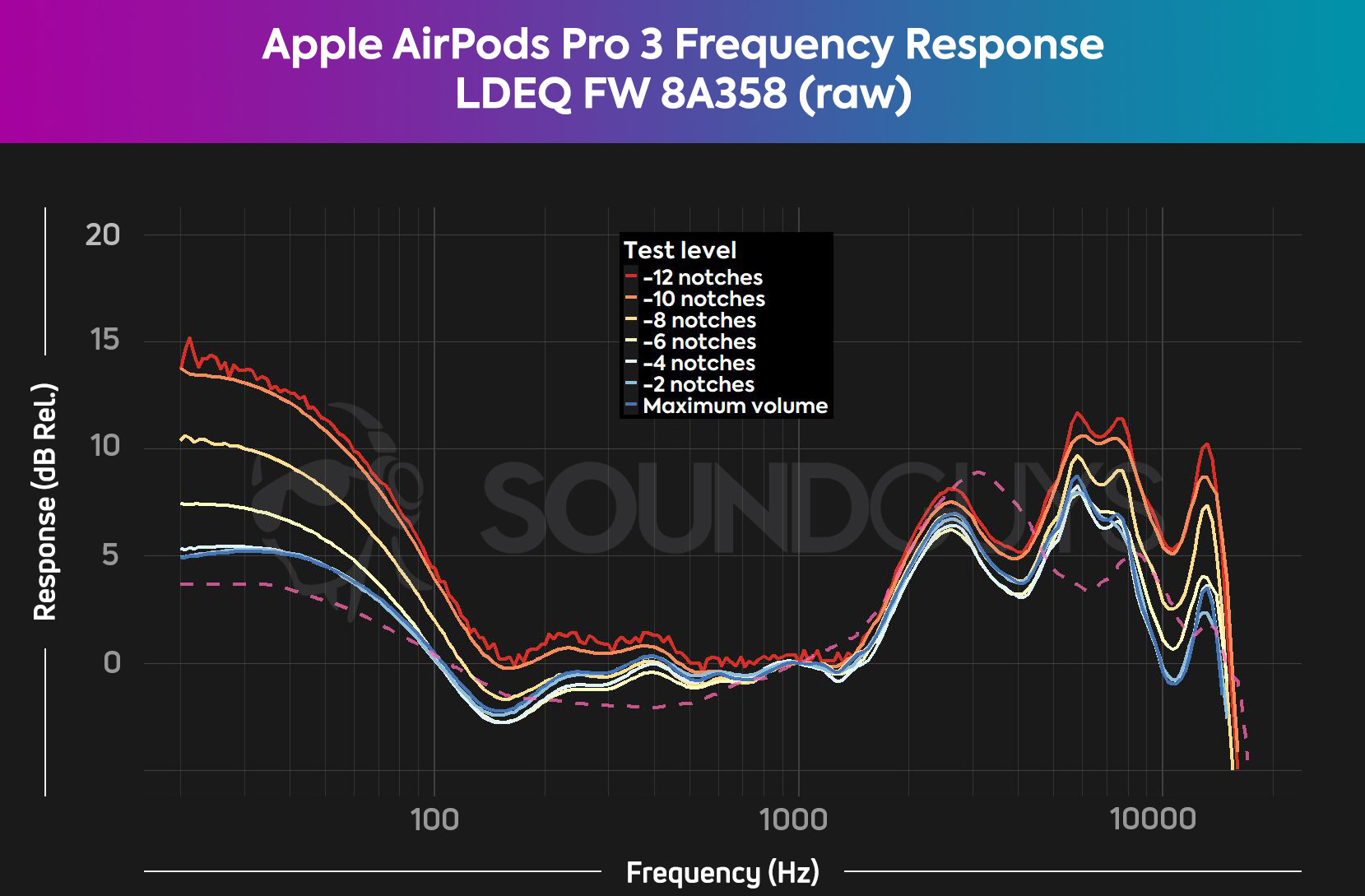
The above is a normalized frequency response chart, showing the tuning of the Apple AirPods Pro 3 at every hardware output volume. While some levels are a little different than others, the key takeaway here is that the quieter you listen: the more extreme the bass and treble will be. Those who prefer a tuning close to our preference curve will be find themselves wanting for a better sound, and those who are coming from the AirPods Pro 2 will likely find the new AirPods Pro to be too bassy with uncomfortable highs. If you’re someone like us who tends to listen to music at a reasonably low level, putting the AirPods Pro 3 in your ears for the first time is going to sound very off compared to what you’re used to. However, the louder you listen, the more the bass and treble drop to more reasonable levels.
Normally, I would bypass this by using an equalizer, but Apple doesn’t allow that in its base settings. If you find the spikes in the highs and bass to be objectionable, there’s really not much you can do to address this outside of some hacky workarounds. For example, maxing out the hardware volume and turning the levels down in your music app. This is probably why you might see some people gripe about the sound, and others rave about it.
That aside, there are some consistent themes in the sound here. For example, the bass is strongly emphasized with a dip just past 100Hz before the emphasis rises again in the mids. This dip should make the sub-bass seem a bit louder than it actually is relative to the upper-bass — matching my impressions. The highs are quite bizarre to us, but the wild overemphasis in the 5-8kHz region can sometimes help out small sounds like room effects and string attack to stand out — something difficult at low volumes. Recently, Apple updated the AirPods Pro 3 to be a little less aggressive in this region, but it’s still wildly overemphasized in our opinions.
Loading chart ...
This is pretty frustrating for us, as the response for the maximum output level is fairly reasonable, if a little weird. Trying to communicate how something will sound to the general public is complicated enough on its own, and this feature makes things much worse.
Sometimes things go wonky

An interesting issue we found with the Apple AirPods Pro 3 is that the sensor on the inside of the earbuds ABSOLUTELY MUST come close enough to your ear to detect wear — which isn’t a guarantee if the new shape doesn’t fit your ears, personally. Apple and Beats products have extreme issues with this historically, so it’s darkly amusing to see this continue. If this happens, some really weird things can go on. For example, that big ‘ol bump in the high bass/low mids and a wild bass overemphasis relative to the highs.
Loading chart ...
If you listen to your AirPods Pro 3 and get absolutely blasted by low end, chances are good that either:
- You have the wear-detect sensor disabled.
- You’re listening at a low volume.
- The AirPods Pro 3 don’t fit you all that well.
If the eartips don’t agree with your ears, there’s a chance that this will happen to you when they pop out. Be sure to run the ear tip fit test if you’re worried that this is a possibility.
Multi-Dimensional Audio Quality Scores (MDAQS)
Hold up! Something’s missing
We’re currently upgrading a few things in the lab, and we’re holding off posting MDAQS results for now. But we have tested the AirPods Pro 3; we’re compiling a little more information before we publish the results to ensure the quality of data meets our editorial standards.
Can you use the AirPods Pro 3 for phone calls?
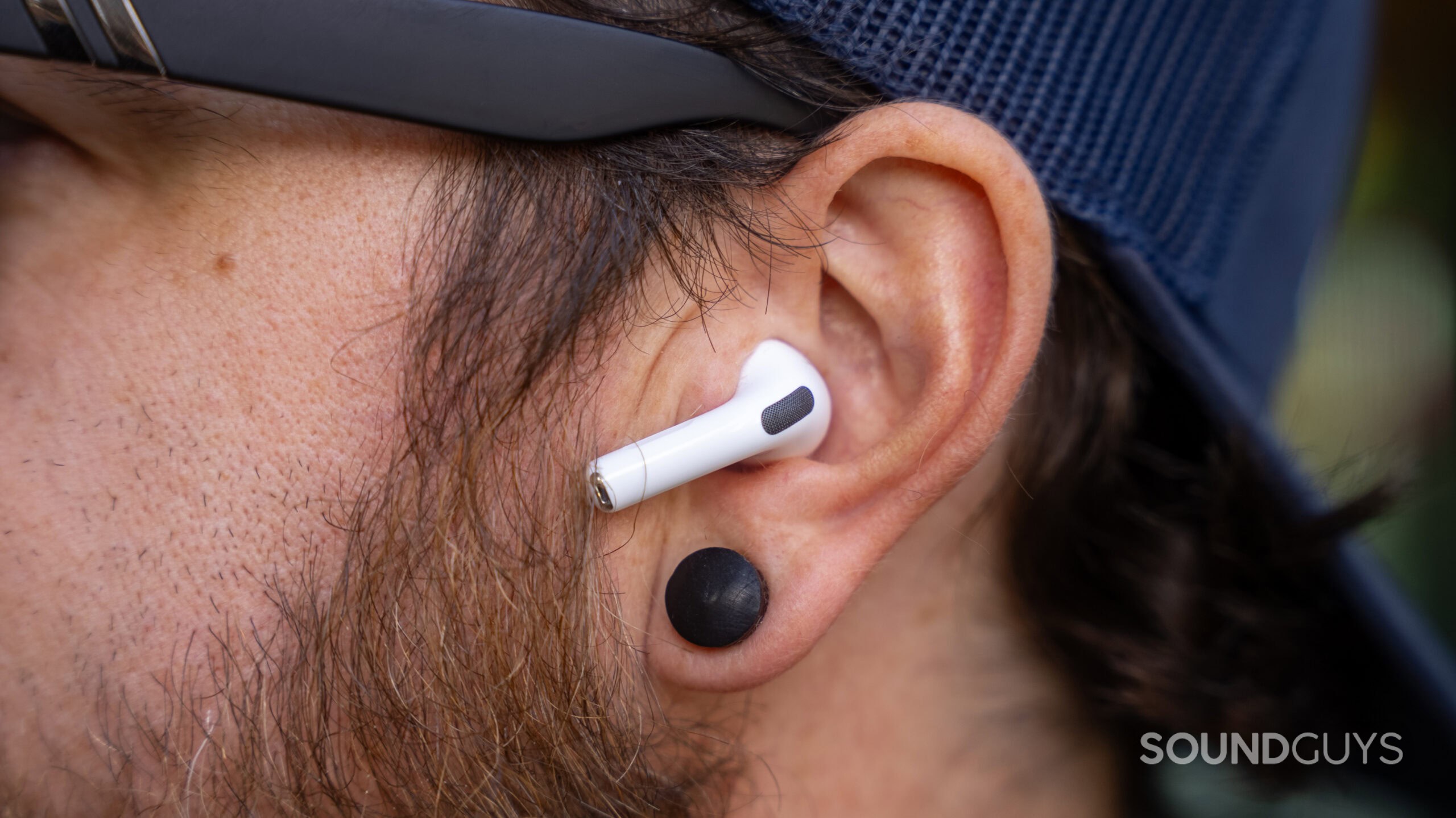
The AirPods Pro 3 uses dual beamforming microphones for taking calls and recording voice notes. Combined with the H2 chip, the AirPods Pro 3 microphone system is designed to reduce background noise and isolate your voice during calls, making sure that you’re heard loud and clear on the other end. In a quiet room, the microphones on the AirPods Pro 3 sound very good. Vocals sound full and detailed — perfect for a conference call or voice memo. All the microphone samples were recorded with the earbuds paired to an iPhone 15 Pro via the Voice Memos app.
Apple AirPods Pro 3 microphone demo (Ideal conditions – Standard mode):
How does the microphone sound to you?
Apple AirPods Pro 3 microphone demo (Office conditions – Standard mode):
Apple AirPods Pro 3 microphone demo (Street conditions – Standard mode):
Apple AirPods Pro 3 microphone demo (Windy conditions – Standard mode):
Apple AirPods Pro 3 microphone demo (Reverberant space – Standard mode):
Despite the excess noise, I can still clearly hear the person speaking through the AirPods Pro 3 microphones in Standard mode. Then again, your voice may not come through clearly if you’re taking a call with weak internet or cell service.
Apple AirPods Pro 3 microphone demo (Office conditions – Voice Isolation mode):
Apple AirPods Pro 3 microphone demo (Street conditions – Voice Isolation mode):
Apple AirPods Pro 3 microphone demo (Windy conditions – Voice Isolation mode):
Apple AirPods Pro 3 microphone demo (Reverberant space – Voice Isolation mode):
The AirPods Pro 3 microphones do a good job in rejecting outside noise with Voice Isolation enabled. Passing cars, keyboard clatter, and the whir of a vacuum are appropriately quieted. However, there is some audible crackling when using the AirPods Pro 3 microphones in windy environments. Reverb tails are also audible when using the mics in reverberant spaces. Despite these artifacts, voices sound clear enough for people to understand what you’re saying over a call — even if that call is made in non-ideal conditions.
Should you buy the Apple AirPods Pro 3?
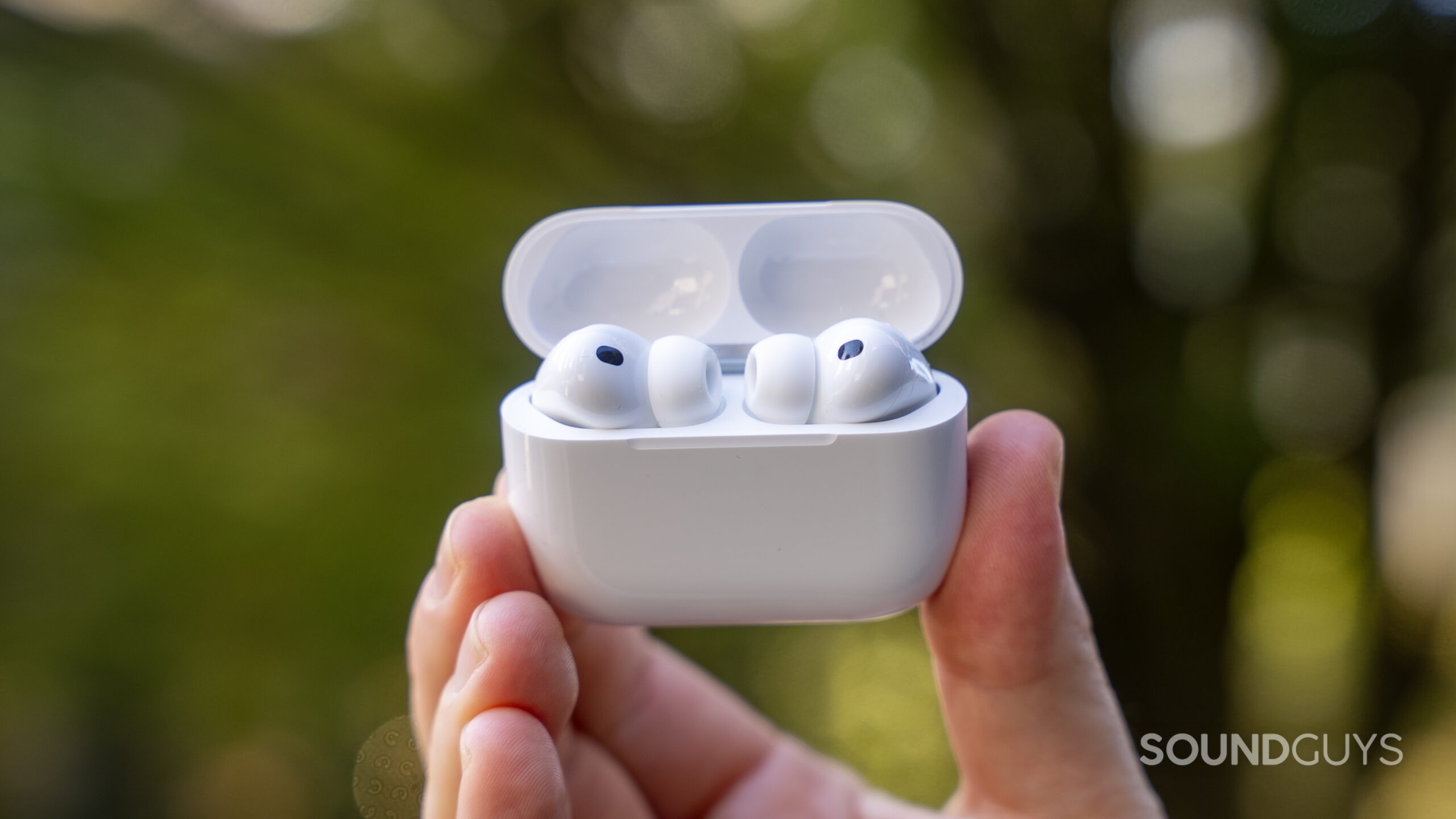
The AirPods Pro 3 offers improvements inside and out that make it well worth the upgrade. Apple’s latest boast improved ANC performance that makes listening to music very enjoyable, even if you’re on the oldest, screechiest subway car. Additionally, features like a built-in heart rate sensor, hearing assistance, and Live Translation allow the AirPods Pro 3 to stand out from other, more expensive flagship earbuds, such as the Sony WF-1000XM5 and Bose QuietComfort Ultra Earbuds (2nd Gen).
For as good as the AirPods Pro 3 are, they aren’t perfect. The lack of EQ controls in 2025 is particularly upsetting, as well as the lack of proper support for Android devices. Also, while the redesigned earbud housing and ear tips may feel comfortable, it doesn’t fully solve the fit stability issues some users had with the previous AirPods Pro. Some features, such as Live Translation, also need more refining before they can be taken seriously as a selling point. Finally, those coming from the AirPods Pro 2 may not like the changes to the sound.
For $249, the AirPods Pro 3 aren’t cheap by any means. But given its expansive featureset and great performance, these earbuds may be a worthy investment for those who are already guests in Apple’s walled garden.
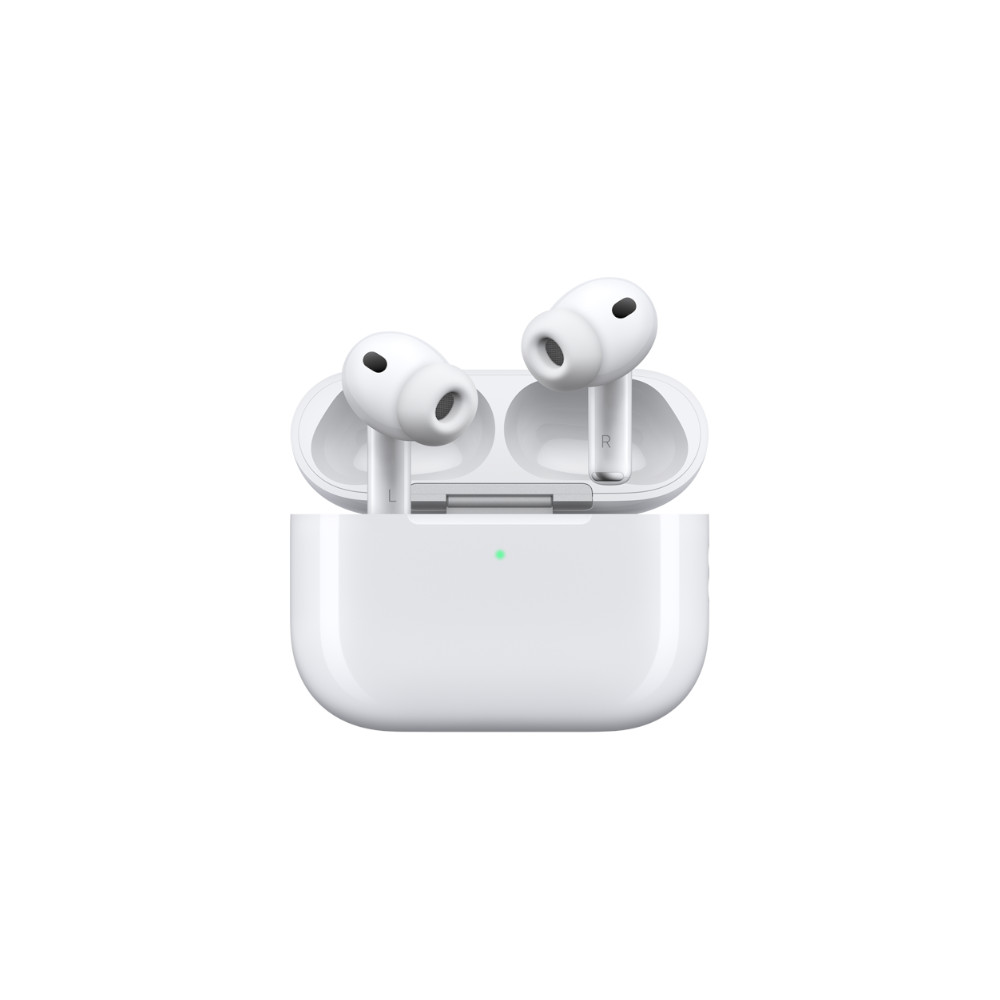

What should you get instead of the Apple AirPods Pro 3?

There are a few alternatives to consider if you want to stay within Apple’s product ecosystem. The Beats Powerbeats Pro 2 $249 at Amazon, for instance, uses an over-ear hook design to ensure a secure fit. It is also comes with equipped with a heart rate sensor for fitness tracking, Apple-exclusive features like automatic device switching and spatial audio, and support for Android devices via the Beats app. The last-gen AirPods Pro 2 $199.99 at Amazon is also a worthy alternative to consider, especially if you don’t need a heart rate sensor. Despite being an older model, the AirPods Pro 2 still offers good sound quality, great ANC performance, Hearing Aid features, and support for Live Translation. Plus, with the new model finally out, you likely find the AirPods Pro 2 at a lower price tag.
For those willing to step beyond Apple’s walled garden, there are plenty of options to explore. The Creative Aurvana Ace Mimi $129.99 at Manufacturer site uses xMEMS drivers to provide excellent sound quality for less than the cost of the AirPods Pro 3. It also boasts Mimi sound personalization to help tune the earbuds to your ears — similar to how Apple’s Hearing Health features work. For a more premium option, the Sony WF-1000XM5 $298 at Amazon offers excellent ANC, a more compact bulb design, LDAC support for higher quality audio streams over Bluetooth, and great app support via the Sony Sound Connect app.
Apple AirPods Pro 3 review: FAQs
Yes, the AirPods Pro 3 have an IP57 water and dust resistance rating. This means that the earbuds are rated for complete submersion in fresh water down to a depth of 1 meter for a maximum of 30 minutes.
The AirPods Pro 3 have an IP57 water and dust resistance rating for the case and earbuds. These earbuds should handle sweaty workouts and dusty hikes with no issue.
The AirPods Pro 3 only supports multi-device connections with Apple devices.
Yes, you can use the AirPods Pro 3 earbuds individually.
Yes, the AirPods Pro 3 work with Siri.
Yes, the AirPods Pro 3 support fast charging. Five minutes of charging in the case will yield an hour of playback.
Thank you for being part of our community. Read our Comment Policy before posting.